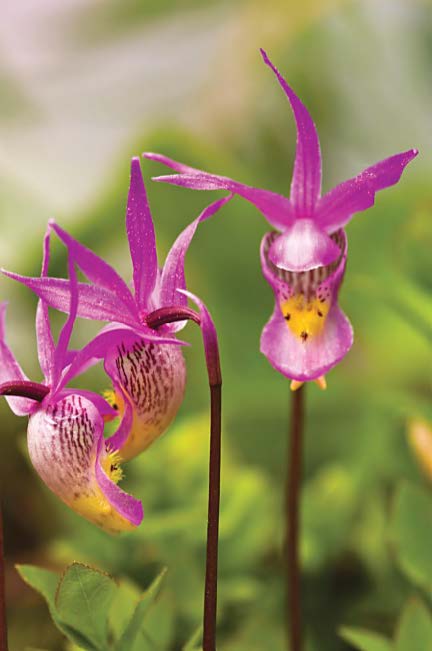(Calypso bulbosa) left on our ranch. The species is rare and endangered because people cannot resist picking them, which kills the plants, and they can not be successfully transplanted because, like many wild orchids, they require a certain fungus in their native soil.
The yellow lady's slipper was becoming scarce in Alberta 40 years ago and was even being sold by scavengers to greenhouses, sometimes door-to-door. In 1917, the species was declared extinct in Britain, allegedly the victim of the Victorian mania for orchid collecting. But then, almost a decade ago, stories started appearing in newspapers that described the discovery of the last wild lady's slipper plant in Britain. Considerable efforts have been made in the UK to reintroduce lady's slipper back into the wild—probably grown from stock that was taken from the wild more than a century ago—and it has been flourishing in public and private wildflower gardens ever since.
Protecting the secret site of the last lady's slipper makes a good story. But a better story, the environmental miracle of restoring the species to its former habitats, could come, ironically, from the Victorian vice of wild orchid collecting and the culture that caused its virtual extinction. ■

Some wildflowers, like the fairy slipper orchid (above), are so rare that you should never remove them from their environment.
Photo: skibreck/Getty Images
Bob Scammell was an avid gardener and sportswriter in Alberta. He was the author of Good Old Guys, Alibis, and Outright Lies (Johnson Gorman Publishing, 1996) and a member of the Alberta Sports Hall of Fame and Museum.